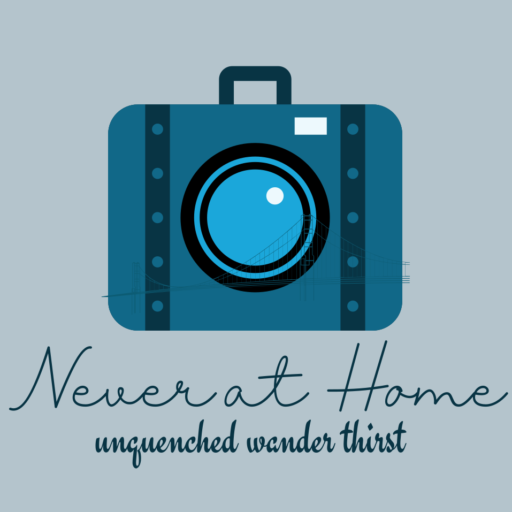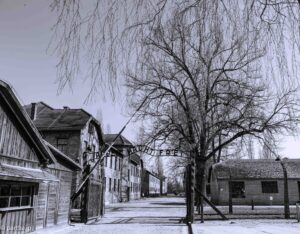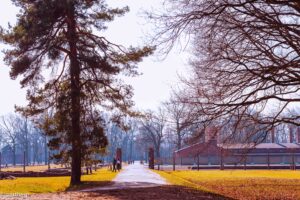
Since then at an uncertain hour,
The Rime of the Ancient Mariner-Samuel Taylor Coleridge
That agony returns,
And till my ghastly tale is told
This heart within me burns
Primo Levi began his account, his last one of the time spent in Auschwitz with these haunting lines from Coleridge.
He told his tale across many books but it was not enough. He lived in guilt because he felt he had insufficiently communicated his message, allowing the world to become indifferent to the past.
He published his last book ‘The drowned and the saved’ in 1986 and a few months later killed himself, forty two years after his release from Auschwitz. The author Elie Wiesel asked “Why death, Primo?” and then answered his own question: “He killed himself because he could not go on.”
Levi wrote “the most serious disease I ever had, the tattoo on my forearm.”
Levi’s friend and fellow Auschwitz survivor Jean Amery too killed himself a few years before him
“Anyone who has been tortured remain tortured”wrote Amery, having been tortured by the Gestapo for being a Belgian resistance fighter.
“Faith in humanity, already cracked by the first slap in the face, is never acquired again”he continued.
Joseph Wulf was another writer, he was silent for 14 years after his liberation from Auschwitz after which he started writing, eighteen books in total. At the end of his life he lamented “ I have published eighteen books about the Third Reich and they had no effect… mass murderers walk free, live in little houses, and grow flowers….. In 1974 he jumped to his death!
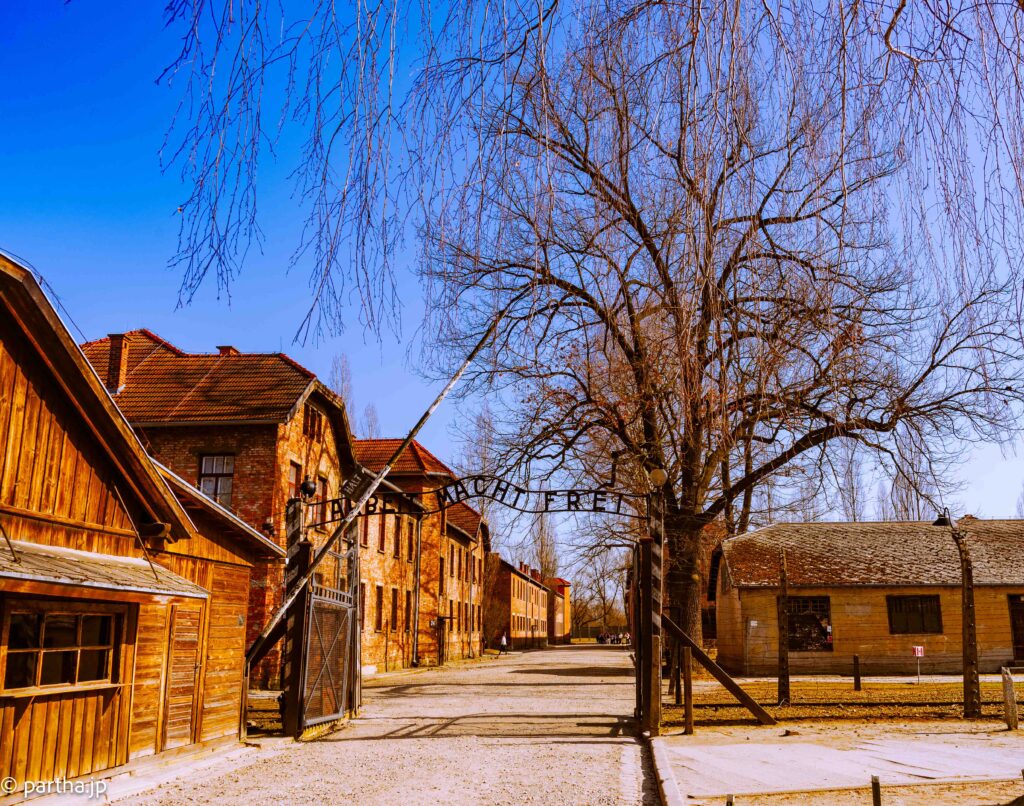
I do not seek to romanticise suicide, there can be no justification in the act. It comes out of desperation and hopelessness, and in life there is always hope.
It might seem like a strange thing to say keeping in mind that millions went into gas chambers without any time to kindle any hope. They arrived weary and overwhelmed and were lead into the gas chambers immediately. But there were those survived going through tortures, privations, near deaths but clung on to that faint thread that pulled them through.
Halina Birenbaum wrote about her experience in the Warsaw Ghetto and then Majdanek camp in her book ‘Hope is the last to die’. She survived the Ghetto, constantly on the run from the Nazis until her family was caught and sent to Madjanek, she was separated from her mother, who was gassed and later was part of a group sent into the gas chambers, they stripped and waited for death. But the Nazis had run out of Zyklon B, and the group after waiting for a few hours was asked to get dressed again.
They were moved to Aushwitz a few days later and when the Soviet troops drew close, Halina was forced on a death march, survived it and was transported to another camp Ravensbruck, where she faced conditions worse than Auschwitz, and she survived again till the American troops entered Ravensbruck and freed all the inmates.
So there was hope and there was survival, but for many of those who survived they could not bear to go on living. Around 1.1 million people perished in Auschwitz, out of a total of the estimated 6 million that died all over Europe and many more afterwards. There are no accurate records on how many died after liberation, but survival overwhelmed many and they chose to kill themselves rather than go on living with guilt!
There are start and end dates to Auschwitz, these were originally Polish Army barracks that the Nazis converted into concentration camps. The camp was founded in 1940, the first Polish prisoners arrived in June of that year. The camp was liberated on 27 January 1945 when the Soviet troops arrived to find around 9,000 mostly sick prisoners left behind by their Nazi captors. The remaining prisoners started on a death march, the Nazis moved them to other death camps and around one third of these prisoners perished during the march.
I went to Auschwitz as a tourist, eighty years after liberation. I did not go unprepared, I read books, watched videos preparing myself but all I came back with was despair, dejection and finally anger. Weeks after my visit, I see Auschwitz, in the mornings, evenings and at night. It comes at random at odd places, a strong emotion while riding the subway, a distracted moment while watching TV or in the moments before sleep at night. Sometimes I fret, thoughts flowing through and the next morning when I want to write them down they are gone!
When we talk about the Holocaust, we think of Auschwitz Birkenau. But it is important to remember that the Nazis operated other camps. 1.7 million people died in the three camps that the Nazis operated in Poland. They destroyed these camps later and no trace was left of them.
“When images are used to symbolize the Holocaust, it’s mostly Auschwitz that is featured. The centrality of Auschwitz in the memorialization of the crime is almost ubiquitous….Of course Auschwitz did….go on to become the most murderous death camps of them all. But there is a danger that these three camps-Belzec, Sobibor and Treblinka-become if not forgotten, then somehow overlooked. The Nazis would have approved of this. They wanted no one to remember these places…… One does not see images of Belzec, Sobibor and Treblinka in holocaust memorialization because there are no images of the camps to show. In a way, that, as much as anything else, demonstrates the bleakness of the crime. Those who were murdered were turned to nothing, and the places where they died were turned to nothing along with them”.
The Holocaust-Laurence Rees
Each visitor reacts differently, some feel it immediately and for some, like me, it comes as a delayed reaction. My trip back home from Auschwitz was eventful, cancelled flights and an injury kept me occupied. But once I was back and settled into my routine, I see Auschwitz again and again.
So I wrote an account of the visit, the sights, the impressions and the effects. I obsessively read books, pored over details, putting notes on the books that I read, marking the pages, going over incidents many times and yet when I try to write it seems lacking, there is no emotion there, and Auschwitz needs an emotion!
Planning a visit to Auschwitz is easy, it requires booking travel, a hotel and a local tour operator, but preparing for Auschwitz is difficult. To understand the evil that Auschwitz stands for, visualise the extremes of human cruelty, fathom the depths of human depravity and yet go forward and visit the place that stands for all these extremes is madness.
Auschwitz represents a breakdown in civilisation, the people who planned this mass murder were highly educated and going by he social norms of that period, supposedly cultured. They planned the extermination of 11 million people coldly and casually, the sterile thoughts and ideas far separated from the actual killing process. Some of them claimed to be of a ‘sensitive nature’ revolted by the sight of blood. They created plans in luxurious surroundings, distancing themselves from the actual horror that was played out and in the end tried to absolve themselves of all responsibility, saying they were following orders.
There was a remarkable extinction of conscience during that period, the foundation of faith, that is supposed to guide us and possibly distinguish us from the other creatures disappeared entirely.
I sometimes wonder what would have happened if the war had gone the other way, after all history is written by the victors. What kind of world would we have inherited, a topsy turvy one, the one of opposites, where evil triumphs and the good and just are eradicated? Sometimes when you look around and watch events unfold you wonder if we did inherit that world!
The victims uprooted from their homes, their livelihoods destroyed, thrown into railway carriages meant for transporting animals, put into filthy, disease ridden camps where survival was a continuous struggle, where they were dehumanised and then finally killed.
There is something about this place, where so much happened in such a small area with so much brutality in such a short period of time. There were other death camps, Dachau, Belzec, Sobibor, Trebilinka where murders happened on mass scale, but there is only one Auschwitz!
Birkenau
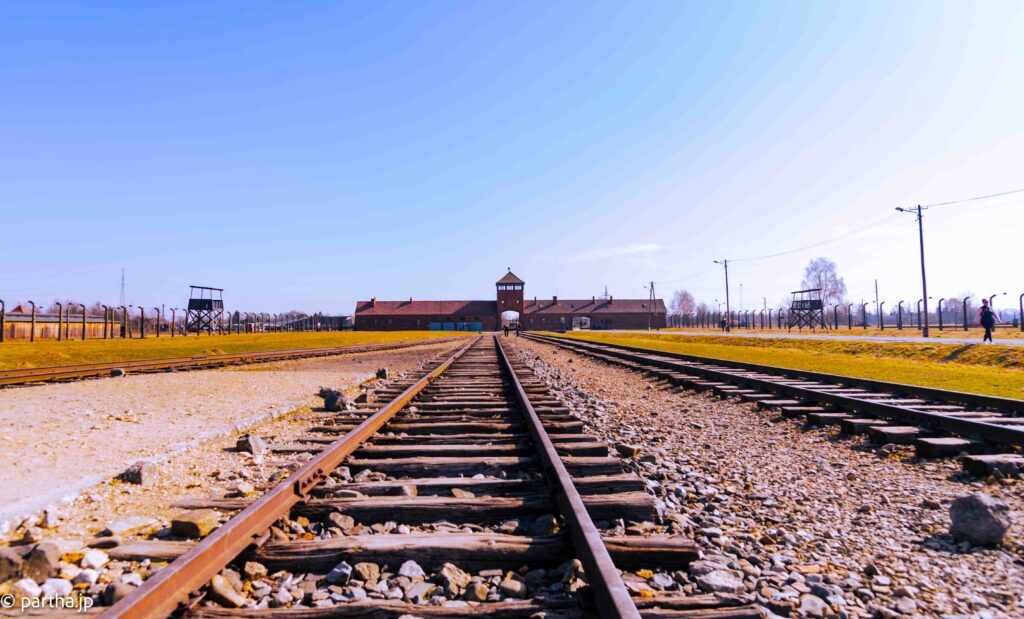
I went to Auschwitz in early March, an unusually warm and sunny morning. My tour operator had cancelled the tour the night before so I arrived at the gates, entering the reception area not knowing whether there would be a tour that day.
I was in a group, colleagues from across the world, Bulgaria, Spain, USA, UK and me. We could book a tour for later that afternoon, Auschwitz can be accessed only as a part of a guided tour but Birkenau can be accessed without a guide.
Since our guided tour was later in the afternoon and it was early morning , we decided to start with Birkenau.
Both Auschwitz and Birkenau are mentioned in the same breath but these are two separate sites, located three kms apart. Auschwitz was the concentration camp, where the inmates were put to work, at least some of them. There were ones who were selected for gassing on arrival, the ones who weren’t were worked to death. The average lifespan for a female inmate was 3 months, 5 months for a male.
Birkenau was the killing factory, it was the place the Nazis set up for killing humans and perfected mass extermination of humans on an industrial scale.
‘Auschwitz upset me but Birkenau haunted me’ one of my old friends told me, running into him after many years in Berlin, he proceeded to describe his visit a decade ago, the trauma still fresh after a decade.
We walked to Birkenau from the Auschwitz gates, a 30 minute walk under a warm Sun on an early Spring day. We passed houses on the way, some of which had once been razed as the Nazis claimed the area for their death factory. It was a quiet Saturday morning, the yards empty, though some of them had dogs barking at the strangers intruding their solitude.
A three kilometre walk was what some of the inmates undertook every day, across all seasons, hot summer and cold winters. They did not carry water bottles to quench their thirst, they did not carry snack bars for their hunger pangs, they were starved, deprived of water and beaten as they trudged this path every day.
They walked through the heat of the summer, the slush from rains or in the winter snow on frost bitten feet, the ones the Nazis did not kill in the gas chambers, they tried to kill them by exposing them to the elements, weakening their bodies and breaking their will to live.
The prisoner count for the people who left Auschwitz in the morning had to match the numbers who came back in the evening, so the ones who died either through overwork or exhaustion were still carried back, their dead and lifeless bodies dragged along by their fellow inmates.
Birkenau was visible from far, the railway tracks leading into the entrance, the tracks splitting and from the distance I could make out the outlines of the unloading station.
I have visited Auschwitz and Birekenau many times in my mind, I have imagined how it would be, the atmosphere, the surroundings…. But in all the movies that played inside my head , it was always dull, gloomy, overcast and grey.
However today was bright, sunny and almost cheerful if you forgot where you were. The spread of Birkenau, the effort involved in walking its ends, the sheer scale of the industrial complex made one sweat, take off the sweaters, jackets and any other outer covering that you wore to keep out the cold.
But then you remembered you were at a killing factory, a place where the Nazis perfected extermination of a part of the human race , built barracks to crowd the inmates into, gas chambers to kill them and crematoriums to dispose of their remains.
Laurence Rees talks about Birkenau
“These buildings were something more than a means of killing the men, women and children the Nazis hated and feared; they symbolised a system in which only the productive deserved to live. They were inhumanity memorialised in brick”.
The holocaust-laurence rees
Birkenau opened in March 1942, meant to serve as a branch of Auschwitz. It became the site of the frenzied executions of mainly Hungarian Jews in 1944, the Nazis realising that the war was not going their way, their dreams of dominating Europe slowly fading, decided to focus on their other obsession, ridding Europe of Jews. 90% of the people killed at Auschwitz-Birkenau were killed at Birkenau!
We were not part of a guided tour so walked without purpose, crowds were building up, there was a French tour group but the rest were stragglers like us, unguided, undecided and unsure.
I walked along the railway tracks, splitting after a distance, one set of tracks leading to the ramps, the other probably meant to park the carriages, clean them, send them back for the next lot of people to be brought in for extermination.
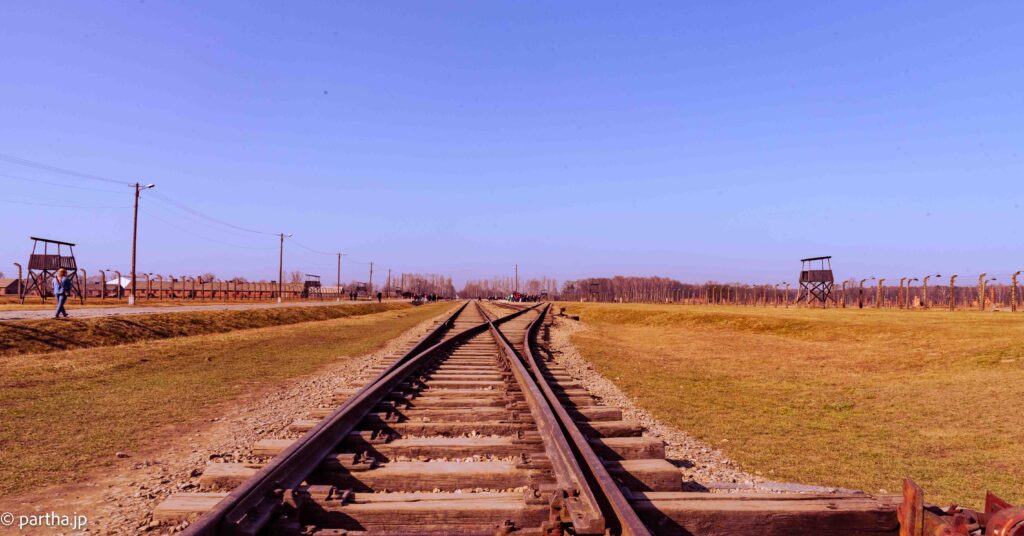
The watch towers towered intimidatingly above the barbed wires, and behind the wires were the barracks. It is difficult to find right words to describe the place. Can we call roughly built, overcrowded hovels, barracks? Do we call the people who lived in the barracks as ‘inmates’? What crimes had they committed? They were here because they followed a religion and in the Nazi eyes were a subhuman race.Most were driven to sickness either due to the inhuman way they were transported to the camps or fell sick from overwork, lack of hygiene or from a lack of hope.
Stepping inside the barracks, looking at the sleeping area, wooden planks for the tired backs to rest on, five or more inmates crowded into every sleeping space. The toilets, a cement block with holes over a ditch, were symbolic of the lack of dignity that most inmates endured during their final days.
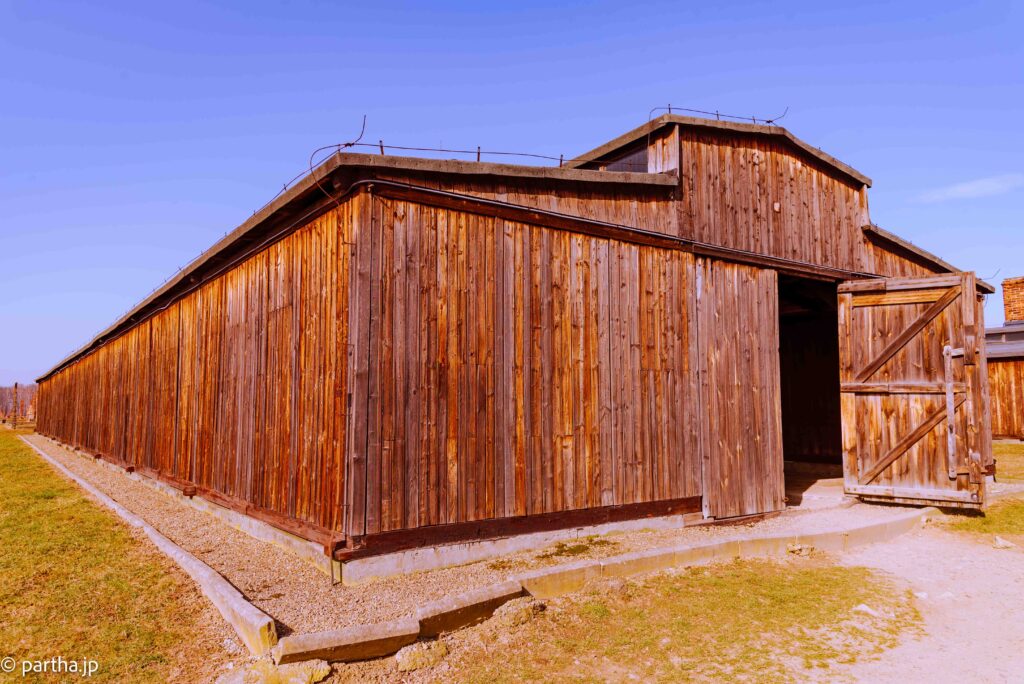
There is a block where some on the inmates drew pictures on the wall, children were housed in this block. I struggled to imagine why the Nazis allowed children here, in most cases they were the first ones to be gassed. Did the children come here because the Nazis could not kill all of them on the same day, how many days did the children live here, questions scattered around, but we had no guide and there was no answer!
The Nazis tried to destroy all evidence of their crimes during the final days, blowing up the gas chambers and the crematoriums. Chimneys built of bricks eerily stand, the wooden structures around them being burnt down.
The destroyed remains of a crematorium No 2 still exist, the Nazis left in a hurry and could not erase the evidence of their crimes. The ruins in the middle, emptiness around them, a grey and black mass in the middle of the spring foliage. Visitors walk on the edges, one cannot enter, even if one wanted to.
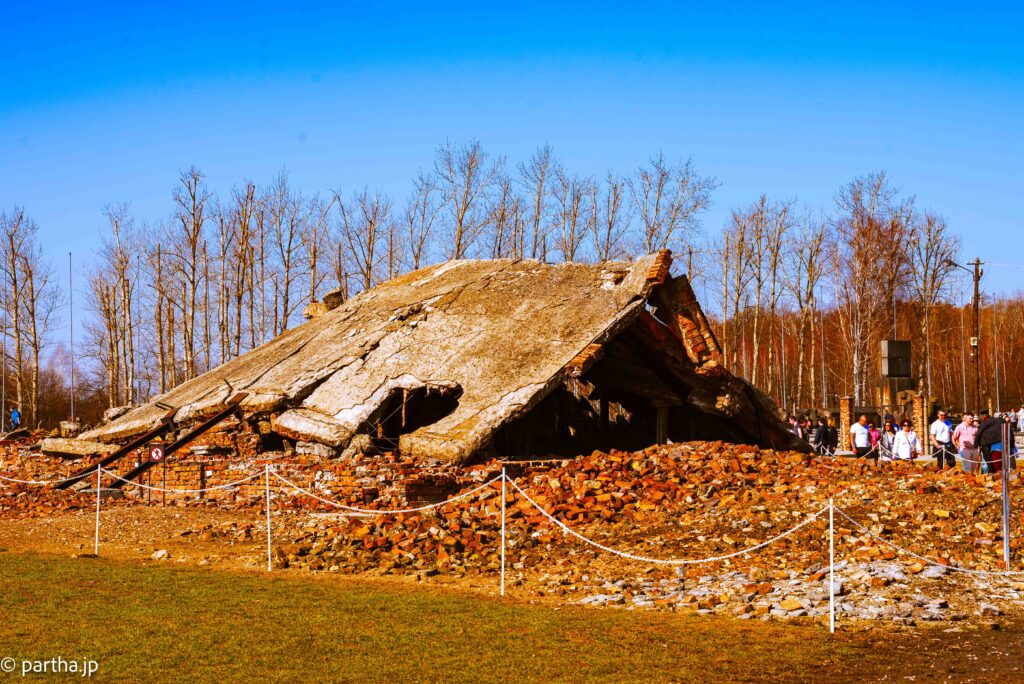
There is a memorial, built in recent decades, standing next to a gas chamber. There are plaques in different languages commemorating the horrors that happened here.
At one corner of Birkenau is an ash pond, used for disposing of human ashes from the crematorium. The say flowers grow by the shores of the pond in summer, the bleakness of winter makes such a thing unimaginable. Behind the pond stand woods, stark and bare in winter.
Birkenau takes time to sink in, this large expansive complex with its barracks, gas chambers, crematoriums, ponds lined with human ashes and the railway tracks with its connected ramps, a jigsaw puzzle of horrors, each piece separate that comes together in your mind after a few days.
The inmates, the prisoners would get off the trains, riding them for weeks at times, hungry, thirsty and bewildered, they would stand on the ramps and a Nazi doctor with a flick of his finger would decide their fate, instant death or more suffering before an almost inevitable death. There are pictures of old and young, selected for death marching towards the gas chambers, unaware of the terrible fate that would befall them in a few minutes, and those pictures of innocent hope are the most disturbing.
As I walked along the fences, my camera trying to capture the forbidding atmosphere outside the barracks, my colleague called my attention to something stuck on the barbed wire fence.
At a height of around 4 feet, right on the spike of the wiring there was what seemed like a dead mouse. There was no head but the body was unmistakably of a rodent.
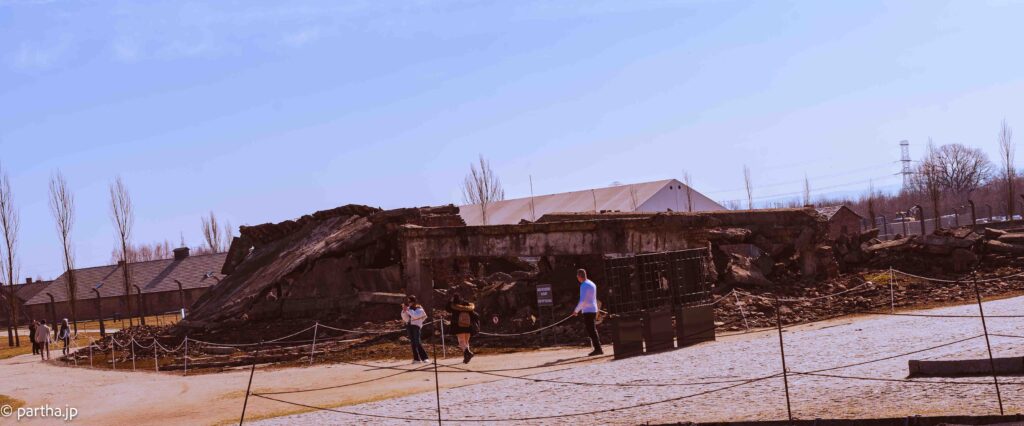
I searched for a reason why a mouse would be stuck so high on a fence, it could not have made its way on its own, the small body, the height and the sharp wire made that impossible. A bird could have dropped it there but getting stuck at that spot seemed highly improbable.
It probably was a macabre joke, a desecration in my mind, of all that the site now stood for. The depths of human depravity is something none of us will ever understand and Birkenau seemed to be the right place to prove that. Someone felt that stringing up a dead rodent on a barbed wire fence meant something, a joke an insult, probably both.
As we walked towards the gates, the last part of the trip, passing the ruins of the crematoriums and gas chambers and a memorial built between them, the imagery was stark, what stood out was what the Nazis tried to destroy. That final act of destruction, the destroyed buildings, the scattered debris, the surviving chimneys from the burnt barracks ,the collapsed roofs, the steps leading to the gas chambers, debris strewn all around that will remain for ages.
Birkenau is also the largest graveyard in the world, the soil contains the bones of the inmates, scattered around after cremations. The soil is seeped with the dead, their ashes, bones and sometimes the valuables that they carried on person when they came to this death factory.
It was mid-day when we finished , the Sun was up, the day was bright and warm but air was heavy as we walked back to the entrance, some of the other tour groups had finished at the same time and headed to the bus stop. The ones going out were silent, the ones coming in and starting the tour livelier!
We took the bus back to Auschwitz, the afternoon was hot, a few of the group suffering from exhaustion or the excesses of the earlier night and found a cafe for a quick lunch before we assembled for the next part of the tour, Auschwitz.
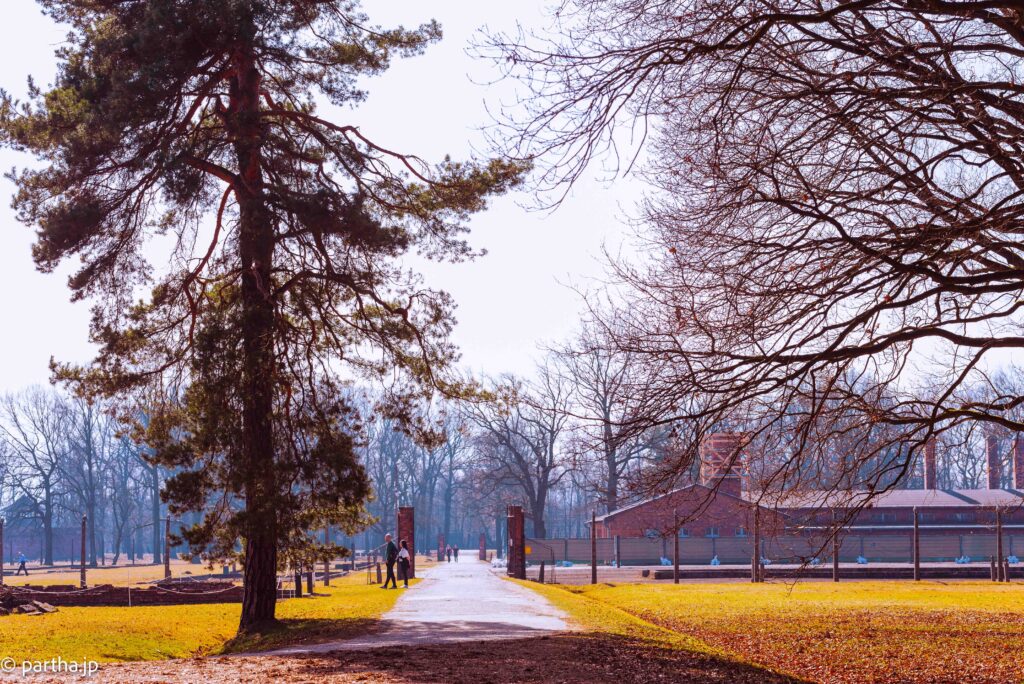
Auschwitz
We assembled at 13:00 for the tour that would start at 13:30, green stickers on our chests identifying the tour that we would be a part of. The staff asked us to go into the entrance of the main building a few minutes after 13:00.
Our bags were put though scanners, our IDs checked and matched with the tickets and finally we went through metal detectors before assembling near the starting point of the tour.
It is a reflection on the state of the world today that a tour to the sites of one of the greatest crimes committed against humans should have such strict security.
Our tour guide introduced himself, asked us to walk down into another hall, pick up headphones and receivers, strap them on and assemble yet again in front of the gate of Auschwitz.
We then walked through a tunnel where victims names were being recited on speakers and emerged into sunlight. The paths were paved, there were benches to sit on and then there were the red brick buildings all around.

We gathered under an oak tree where the guide gave a background of the camp, Polish army barracks converted into concentration camps, the initial inmates were political prisoners, university students from Warsaw.
There were a few Lombardy Poplars around, more numerous than the Oak and the occasional Birch tree. The sun was shining bright, it was past mid-day and had turned warm. It felt like the perfect spring weather.
The commandant’s office, a kitchen and the admissions buildings that come into view before we enter the gates to Auschwitz.
‘Arbeit Macht Frei’ the infamous sign at the gates of Auschwitz says. ‘Work Sets you Free’ it translates into English and you gag at the cruel cynicism of those words.
The sign was the brainchild of Rudolf Hoess, the commandant of Auschwitz, who himself spent time in prison for political violence and found relief in the work assigned to him at his prison.
In the early years Auschwitz was where Polish political prisoners, German criminals and other dissidents were incarcerated, it was not yet a concentration camp, the idea of sending European Jews for mass extermination came much later.
According to Laurence Rees ’Originally Auschwitz has been conceived as a holding concentration camp-a quarantine camp in Nazi jargon-in which to keep prisoners before they were sent out to other concentration camps in the Reich, but within days it was clear that the camp would function as a place of permanent imprisonment in its own right’
Hoess was a soldier in the First World War, won an iron cross, became disillusioned after Germany’s defeat, joined a right paramilitary militia, was involved in political violence including a murder and was imprisoned.
After his release he took up farming before getting recruited into the SS(an elite force called Shutzstafel) by Himmler and was sent to Dachau as a concentration camp guard.
Dachau was a concentration camp, the initial inmates were the political enemies of the Nazis. Hoess spent three and a half years at Dachau, the brutal regime at the camp, the physical sadism practiced there, the random murder of inmates shaped his character.
It is easy to assign external influencing factors to a man’s character, however there is something inherently sadistic in a person’s character, something even without external help makes you someone who gains pleasure in the sufferings of others, the external factors are the winds that guide you to where you would anyway end up.
Hoess was removed from the post of commandant in 1943 and sent for a posting in Berlin. However he returned , with a vengeance in 1944 to oversee the mass execution of Hungarian Jews. The railway tracks were extended to deliver prisoners directly into the Birkenau camp, around 100 metres away from the Crematoria, furnaces were repaired and the infrastructure was in place to mass murder and cremate the Hungarian Jews. Around 400,000 Hungarian Jews were murdered here in the final year.
I will talk about Rudolf Hoess later, a thug, a bigot, someone who wholeheartedly subscribed to the Nazi ideology of racial superiority and the mass extermination of those they deemed racially inferior, yet he stood for the infamous phrase ‘banality of evil’ someone who presided over mass murder because it was his job to do so.
The Nazis developed gas chambers out of necessity, the alternative of shooting dead people including women and children were driving their soldiers mad. Executing screaming men, women and children who know what fate awaits them, looking at their faces, listening to their screams is difficult for the average human.
Sending unsuspecting people into gas chambers, closing the doors, releasing the gas gave the soldiers the option of conducting anonymous mass murders without having to face the victims.
I came from Birkenau, the mass murder factory built for that purpose. It was easy to imagine massacres in Birkenau, the rough structures of the barracks built to house the condemned, the destroyed gas chambers and crematoriums, there was no ambiguity there.
The horrors that the structures at Birkenau evoked stood in sharp contrast to the surrounding nature. Lombard Poplars stood bare and stark in winter but the oak and birch trees and the occasional ash trees had turned green. The grass was turning a shade of yellow and when you looked into the woods beyond the death factory it seemed beautiful.
Yet when I stood under the gate, below the infamous slogan, Arbeit macht frei-Work brings freedom, and looked at the neatly arranged red brick structures in front of me, formerly Polish army barracks, though they looked more like a college campus to me, I struggled to connect the look of the place to its purpose.
The infamous sign was originally used at Dachau and came from Hoess’s own experiences during his imprisonment at Leipzig. He was made to work , gluing together paper bags, and found solace in this mild labor during his imprisonment.
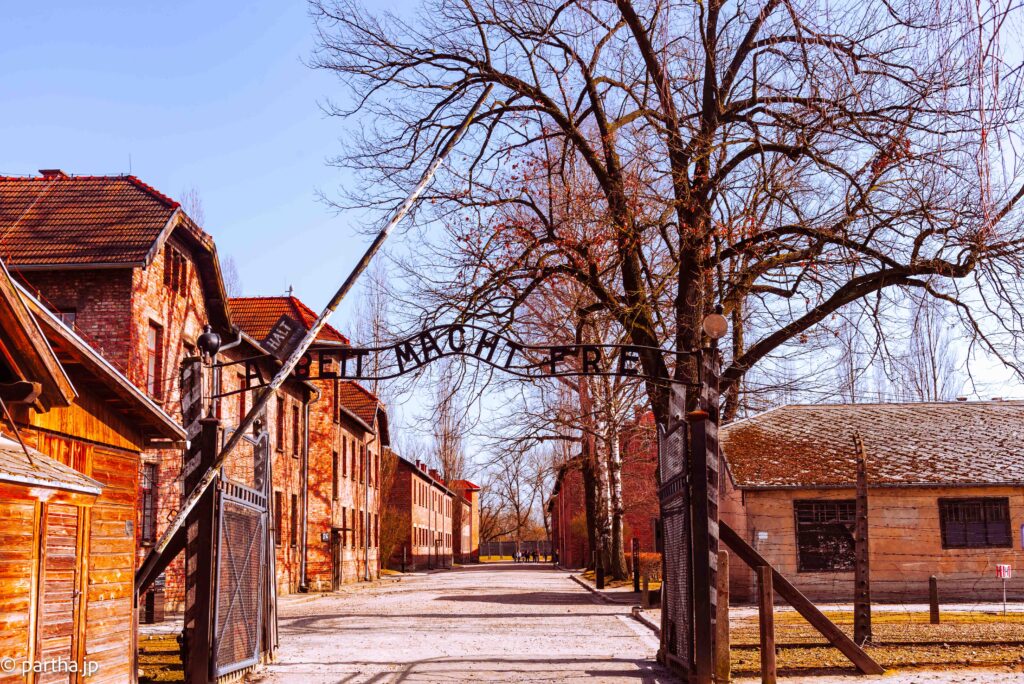
Auschwitz was where prisoners were worked to death, the ones lucky enough to survive the ‘selections’ , this seemingly harmless slogan sounds particularly brutal. What was the freedom the Nazis spoke about, death after prolonged sufferings, daily beatings, starvation and the most inhuman punishments that the mind cannot even comprehend.
I looked at the sign and wondered why no one tore it down, the rage that I felt eighty years after the liberation, those three seemingly innocuous words and the brutal consequence of those words is hard to describe!
Halina Bibenbaum describes her first sight of the Auschwitz gates
’There was an area much larger than Majdanek(the camp she was imprisoned in before moving to Auschwitz), surrounded by barbed wire and many watchtowers close together with machine guns emerging from them. There were long rows of gloomy brick barracks and everywhere thick stinking mud’.
Hope is the last to die-Halina Bibenbaum
‘This camp seemed solid’ she continues ’precisely organised and built as though it was meant to last forever, for centuries’.
Eighty three years later the stinking mud was gone, the windows replaced but the buildings still stood exactly as they were. Having seen the scale of Birkenau, Auschwitz seemed small to me, the blocks compact, the buildings narrow and yet the level of brutality the inmates endured in this narrow strip seemed unimaginable.
We stood under the oak tree, a few stragglers wandered around , and listened to our tour guide. He was intelligent, well spoken and explained the history of the place in detail. Its beginnings, the initial inmates were Polish prisoners, the Nazis despised them too and treated them with the same level of callousness as they would treat the Jewish prisoners later.
There were three other tours being conducted simultaneously, our guide chose the order we visited the blocks. The groups were mostly apart till we converged in Block 11!
Each tour guide used an audio transmitter with different frequency so that our receivers did not mix up the signals. Later in the tour, I separated from our group after spending time taking pictures, there were two other groups in Block 11 where I was separated so I followed the signal on my receiver, turning where it was stronger and I could hear the tour guide better and rejoined the group.
Block 6 was where the first gas chambers were located. It also has a register of some of the inmates. In the early days of the camp the Nazis photographed every inmate, recorded the date of entry into the camp and the date of death, they abandoned this year in the later years, the inmates and the deaths being too numerous to photograph. And tattooing prisoners was apparently cheaper than taking their photographs. Block 6 has photographs of inmates, some with clear signs on beating on their faces and the dates documenting their short and brutal lives at the camp.
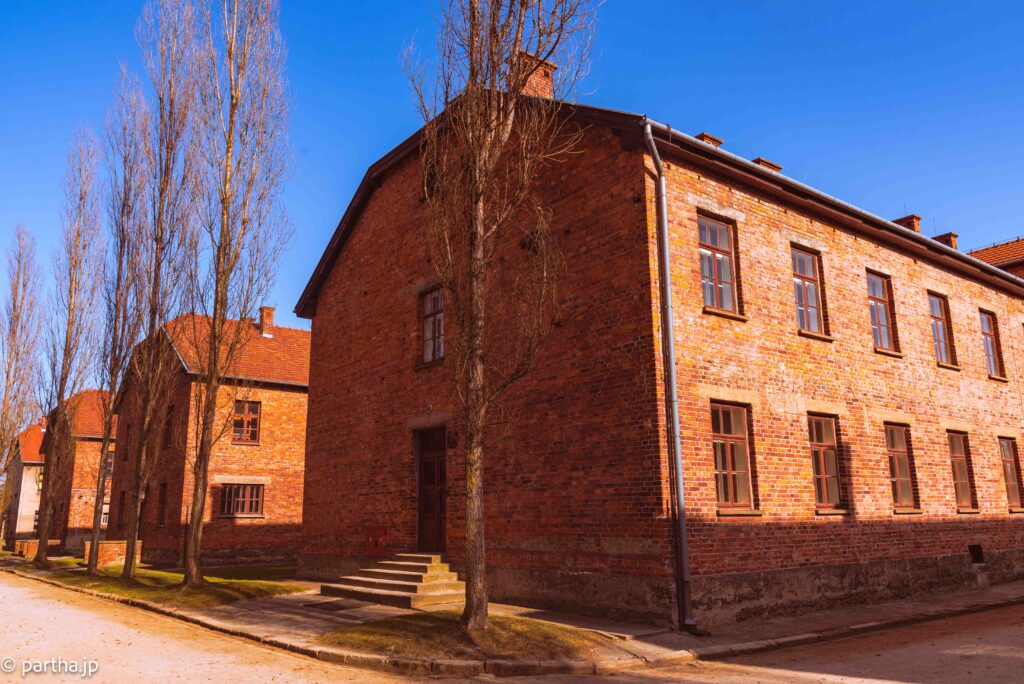
Block 4 is the most disturbing and contains human hair, The Sonderkommandos(inmates tasked with help in the crematoriums) would shave off the hair of the dead inmates and it would be sent to factories to make socks or to be used in clothing of the Nazi army. Taking pictures are not allowed in the room and the sight of that hair, long sidelocks, massive quantities of hair that once belonged to a living human moved something inside. We looked ahead, avoiding each other and controlled our emotions.
Ashen faced, we wandered the rooms, spectacles from the gassed prisoners, prosthetics- artificial limbs and shoes. A pair of small shoes, obviously from a child are located near the display glass. There are bowls, cups and plates that were brought by the people, most of whom never got to use them.
There is luggage display where people wrote their names and the towns they came from, in the vain hope that they would be able to reclaim then later.
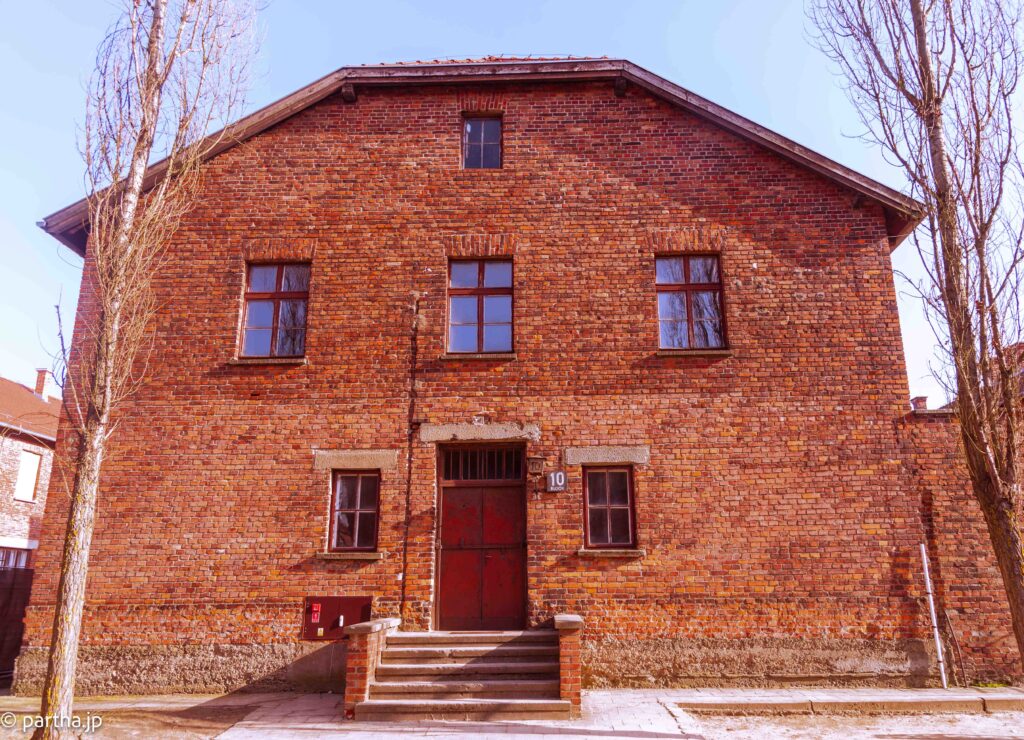
Block 10 was where barbaric medical experiments were conducted on people. Joseph Mengele is known for having experimented on children, twins were his obsession, yet there were other doctors like Carl Clauberg conducting experiments, chemical castration of men, sterilisation of women. Visitors are not allowed to enter Block 10, the experiments that were conducted there too grotesque for the visitors.
Block 11 has been described as a prison within the prison, a place of torture and murder. The methods of torture are described in various books and are too distressing to mention here, but Block 11 was where the sadistic tendencies of the Nazis found an outlet, they devised and invented new forms of torture.
There are parts of Block 11 where Nazis experimented with different torture techniques, there were standing cells, starvation cells and cells where prisoners were beaten to death.
The sight of the standing cells, now partly demolished to give visitors a view of what was inside that brick tomb measuring less than 1 sqm, the starvation cells used till 1943 where prisoners were locked and allowed to slowly die of starvation is disturbing. Our tour guide pointed out the cell numbers and the purposes they were used for and some of us peeked inside the cells through holes on the doors, the brutality of the slow starvation not reflected in the image of the clean cell!
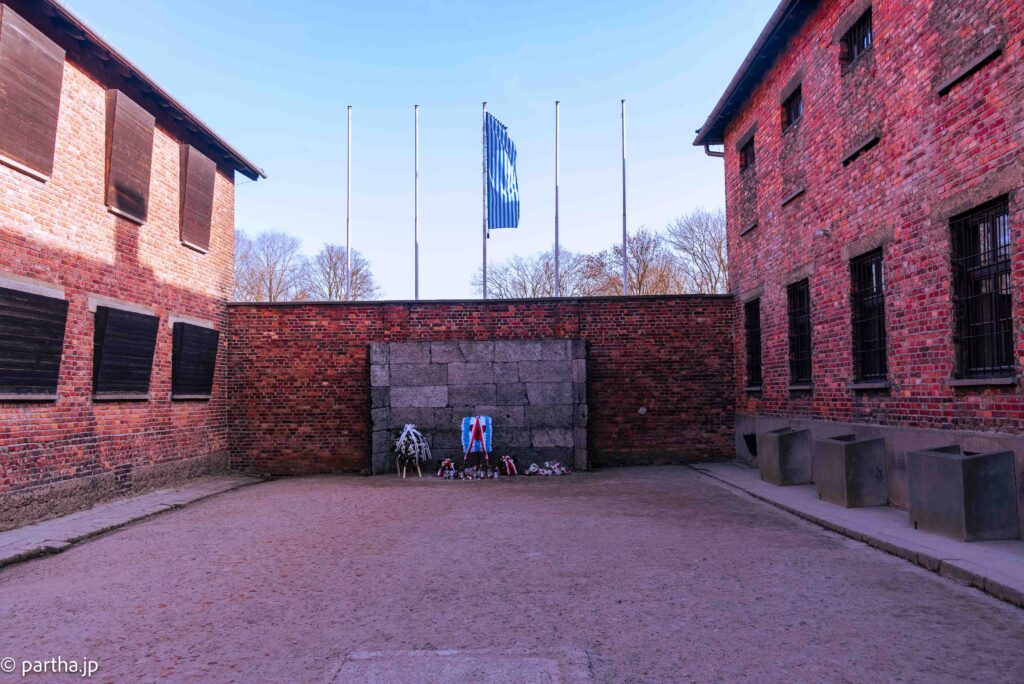
Interpreting history, that too as brutal as Auschwitz is difficult. Eighty years have passed, the buildings have remained untouched but windows have been replaced, the place cleaned regularly. To peek into a cell from a hole on the door and try to understand the horrors that plagued the place is difficult.
The starvation cells were a part of the collective punishment practiced by the Nazis to terrorise the inmates at Auschwitz. Any escape from the camp resulted in the Nazis choosing ten inmates and random and sending them to the starvation cells. If the escapee was not caught, the inmates were starved to death.
That clean cell that I was looking into witnessed such horrors, but a tourist like me peeking through the hole after eight decades had no way of understanding what went on inside.
There is a yard between Block 10 and Block 11 where some of the condemned prisoners were taken and shot. Polish political prisoners in thousands were shot at that spot, the far end of the camp, stone blocks behind them to absorb the bullets.
There is a room in Block 11 where the Gestapo decided on the fates of the prisoners, the ones sentenced to death were immediately taken to the yard and shot.
Killing was an everyday act for the Nazis, they used the delusion of racial superiority to kill those they considered inferior, without obvious moral qualms. Brutality was what drove the SS, the men had to be hard and show no mercy, any signs of softness meant immediate removal from their posts.
Capital punishment still prevails in many countries across the world, in my country of birth, India, it is used in the rarest of cases and there is generally one person who is executed in a decade. My adopted country, Japan, uses it more frequently. Executions are carried out almost every year, the condemned inmates are given no notice of the pending execution, they are told a few hours before the act, ensuring that they do not commit suicide! I have always opposed capital punishment, it is inhuman, cruel and degrading and my I strongly believe that one human does not have the right to take the life of another.
The Nazis killed infants, old and sick people, children, transported people in cattle wagons, treating them worse than animals, the ones who survived the transport, days and sometimes weeks without food would be killed on selection.
The Nazis called their victims ‘animals in human form’ dehumanised then, degraded them, so that killing them would not prick their conscience. It takes strong morals and beliefs not to get radicalised after reading about the Nazi atrocities, it takes strong character to hold on to belief systems that we have developed in our comfortable cocoons.
Before this trip ended I realised how weak my own belief system was!
There is an incident from Block 11 that is meant to offer comfort to people who believe in the redemptive outcome of suffering. A Roman Catholic priest Maksymillian Kolbe offered to take the place of a condemned man. The condemned man was chosen at random as a part of collective punishment for ten inmates who were then sent to Block 11 and starved to death.
Kolbe, the priest volunteered to take the place of the chosen man, but after two weeks of starvation was still alive. The Nazis then murdered him by a lethal injection to his heart.
There was obvious heroism from Kolbe, though he died. However there was no redemption, there was no absolution, there was just plain and ugly death!
Kolbe was canonised in the later years, though it was discovered that one of the magazines that he wrote for before his arrest carried anti-semitic material. There were no heroes in Auschwitz after all!
When the Nazis discovered that Zyklon B, a chemical that was used to remove insect infestations around the camps, could be used to kill humans, the basement of Block 11 was chosen as the site for an experiment, a more efficient method of killing humans on a mass scale.
The experiment succeeded after a few hitches, the Nazis discovered the right dose of the insecticide that was required to kill people immediately, though in most cases death was not instantaneous, it was a few minutes of suffocation and suffering and finally death.
We were lead into the gas chambers and asked to maintain silence as a mark of respect. There was no need for the instruction, the crowd fell silent and walked along the walls watching carefully. One of the men in our group, in his late sixties, stood at a corner for a very long time, staring intently at the wall. He stood away from the group and I wondered if something was wrong with him. The sudden hush and the sombre mood in the chambers discouraged a contact with another human, we wanted to stand far away, no one needed the comfort of company, there was content in solitude. Later I realised that the man probably was looking at the scratch marks on the wall, the last desperate attempt of the condemned, when the gas choked them, filled up their lungs, unable to breathe, they scratched the walls in desperation!
There is a crematorium next to the gas chambers, the ovens where corpses were pushed in by the Sonderkommandoes, after they shaved off the hair, extracted their teeth if they had fillings, one last act of humiliation for the dead before they were incinerated.
The Sonderkommandoes were chosen from among the inmates, their lives better than the others, they had better food, they had beds to sleep in, they bartered their self respect for a few additional comforts.
The Sonderkommandos had to perform, if they did not they were immediately murdered and replaced by new arrivals.
Sobibor was another death camp a few hundred kilometres from Auschwitz and Laurence Rees writes about one of the Sonderkommandoes who survived Sobibor.
“People change under circumstances, People ask me what did you learn, and I think i’m only sure of one thing-nobody knows themselves. All of us could be good people or bad people in different situations. Sometimes when somebody is really nice to me, I find myself thinking, how will he be in Sobibor”!
Toivi Blatt-sonderkoomando who survived sobibor
Yet at Auschwitz the Nazis killed them too, Sonderkommandoes were gassed every few months, the Nazis did not want any witnesses!
Finally we went to the yard, the guide pointed to the direction of the commandant’s house, where Hoess lived in comfort with his family , a few hundred metres away from this workplace, the blocks where people were tortured and killed, the gas chambers and the crematorium.
We did not see Hoess’s house, it was pointed out from far and is not part of the tour. He lived in a large house with his wife and five children, there was even a pretty garden. Hoess was transferred to Berlin in 1943, but his wife continued to live in the same house, yards away from the gas chambers. Hoess finally returned in 1944 to oversee the extermination of the Hungarian Jews.
Around twelve thousand Hungarian Jews arrived every day at Auschwitz in 1944 and Hoess was tasked with finding an efficient way of exterminating these large masses.
What we saw was the gallows where he was hung!
Hoess disappeared after Germany’s surrendered and hid at a farm. The British intelligence arrested his wife and under the threat of sending her and her children to Siberia made her confess to Hoess’s hiding place.
Laurence Rees describes Hoess’s arrest on March 11, 1946
Auschwitz-Laurence Rees
“They surprised Hoess in his pyjamas at his bunk in the stable block, which also doubled as a slaughterhouse. Hoess was hit across his face four times by a British sergeant before he admitted who he was and was then dragged to the one of the slaughterhouse tables where the blows and screams were endless. The medical officer shouted to the arresting Captain’Call them off unless you want to take back a corpse!”
I read the book by Laurence Rees slowly, some of the portions were too disturbing, I had to stop at times, overcome and then continue much later. But it is difficult to describe the satisfaction from reading the account of Hoess’s arrest, particularly the savage beating he received!
There was comfort and solace in reading the account of Hoess being brutalised, I could imagine the blows and there was an almost euphoria as each blow was landed.
Hoess claimed killing women and children was ‘shattering’, but it made no difference to his absolute commitment to the killing process. The killing of a half a million Hungarian Jews was where Hoess’s proved his ruthless efficiency, the detachment from the end results was his character. I cannot imagine anything but satisfaction in the fact that Hoess received the punishment he deserved!
“Snow was falling as they arrived in the early hours of the morning, but Hoess was made to walk naked through the barrack courtyard to his cell. He was then kept awake for three days-soldiers were detailed to prod him with axe handles if he showed signs of dozing off. According to Hoess, he was also beaten with his own riding corp. Then, on 14 March, he signed an eight page confession.”
Auschwitz-laurence Rees
Hoess was finally executed at Auschwitz in April 1947, the site of his crimes, the murder of a million innocents. The day he was supposed to be executed the crowds built up at Auschwitz, several thousand angry people who were ready to lynch him before he went to the gallows.
So the authorities postponed his execution, it was carried out the next morning, in front of a handful of people!
Our tour guide stood making his final speech, he faced us and the tour group had their backs to the gallows. I walked way for a closer look and a few more pictures. I had finished reading the account of the execution before the tour and I stood there watching the gallows and imagining the last walk, I remembered the pictures, Hoess’s final moments. He was silent in his last moments, there were no grand speeches, he did not defend his death cult, he allowed the rope to encircle his neck and swung!
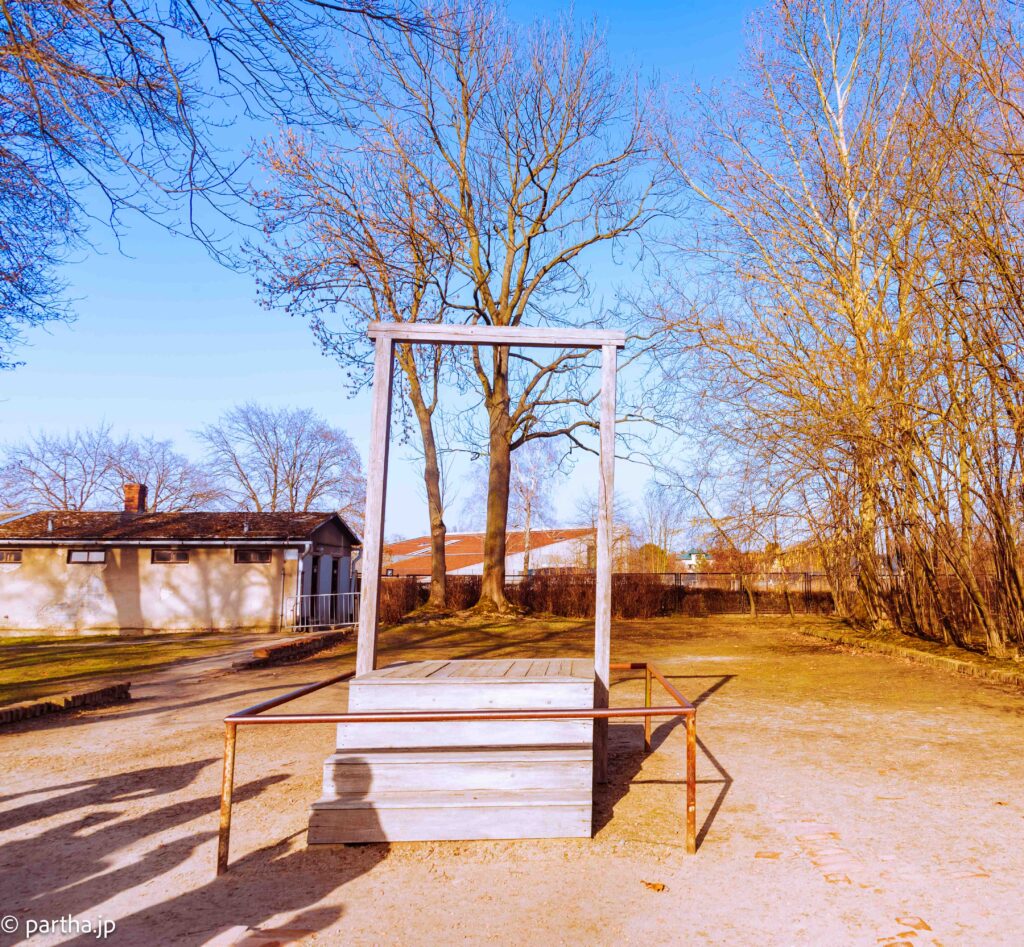
Stainslaw Hantz was tortured at Auschwitz and was a witness to Hoess’ execution, and said
“I think Hoess should’ve been put in a cage and been driven all around Europe so that people could see him-so people could spit on him, so that it would get to him what he did”
Auschwitz-Laurence ReEs
I admired Hantz for his control, wishing somebody to be spit on, when that somebody oversaw the greatest mass murder in history, is mild to say the least.
Hoess swung from a rope and I wished he should have suffered more, I wished he was taken taken to Block 11, kept in the standing cells, starved in the starvation cells, allowed to recover, given hope of living and then executed.
I did not know of these tortures till a few days ago, abhorred the very idea of suffering forced on people and yet I came back from Auschwitz wishing these tortures on other people.
Morality is fickle, our moral compasses weak, they just wait for that strong force that can disengage them and once we lose our bearings there is no going back!
Auschwitz does not make me kind, the murder of millions does not drive me to seek peace, rather it makes me seek retribution, against whom I do not know. Eight decades have passed , most of the victims and perpetrators are dead and yet I do not find peace.
I fret over the perpetrators who escaped, Brunner who fled to Syria, Mengeles who lived out a comfortable life in South America, Ecuador or Brazil, no one knows where, Rauff who escaped to Chile … Adolf Eichmann spent many a years hiding in Argentina before he was captured, smuggled to Israel where he was tried and hanged!
The staff at Auschwitz, the ones who could not escape were tried in court in 1947, there were around forty defendants in the first round of trials, twenty three were sentenced to death and subsequently hanged, the remaining went to prison for various terms ranging from life imprisonment to three years. Rudolf Hoess had been tried and hanged earlier.
The Frankfurt Auschwitz trials took place between 1963 and 1965 of twenty two Nazi personnel who served at Auschwitz, two died before the trial began, two were acquitted, twelve received between three and ten years in prison and six received life imprisonment.
Around 6,500 members of the SS worked at Auschwitz and only 750 received punishment! When Joseph Wulf despaired that mass murderers still walked free…. he was not wrong.
The expectation of justice is fundamental to faith, the belief in the existence of an absolute divine power who would allow a genocide is a contradiction. People lost faith in Auschwitz and there were non-believers like Primo Levi who received a reaffirmation in their lack of faith.
I was first drawn to Primo Levi for his atheism and the account of a moment of weakness at Auschwitz when faced with imminent death at one of the selections, he resisted the temptation to pray, to assign his fate to an imaginary a higher power.
“For one instant I felt the need for help and asylum, then despite my anguish, equanimity prevailed, one does not change the rules of the game at the end of the match, nor when you are losing. A prayer under these conditions should have been not only absurd(what rights could I claim? and from whom?) but blasphemous, obscene, laden with the greatest impiety of which a non-believer is capable. I rejected the temptation, I know that otherwise were I to survive, i would have to be ashamed of it.”
The drowned and the saved
Primo Levi came faithless to Auschwitz and left the same way, resisting the temptation to believe, that act of rebellion that could have been his final one was true heroism.
“Like Amery, I too entered the Lager as a non-believer and as a non-believer I was liberated and have lived to this day, actually the experience of the Lager with its frightful iniquity has confirmed me in my laity. It has prevented and still prevents me, from conceiving any form of providence or transcendent justice.”
Levi dismissed providence as the reason for his survival, he was too ill to go on the death march when the Nazis arrived at the gates of Auschwitz. He was also clear eyed
“The worst survived, the selfish, the violent, the insensitive, the collaborators of the ‘grey zone’, the spies. It was not a certain rule… but it was, nevertheless, a rule… The best all died.”
Primo levi
There were others who came to Auschwitz and lost their faith.
Hope is the last to die- Halina Birenbaum
“Then I would sometimes think of religious fasts……when people voluntarily honour God by fasting. But I vowed if I survived the war and had something to eat, I would never make myself fast.”
Vowing this , I deliberately and with relish declared revenge on that God who had been believed in at the home of my parents, but who deserted us all in our misery and who, here in the Nazi extermination camps, had proved to be an invention of fraudulent priests who ordered us to love and respect him, and fear his justice.”
Linda Breder was one of the survivors of Auschwitz and said the following
“There was no God in Auschwitz. There were such horrible conditions that God decided not to go there. We didn’t pray because we knew it wouldn’t help. Many of us who survived are atheists. They simply don’t trust in God”.
Auschwitz-Laurence Rees
Eighty years later It is difficult to imagine what went on in the minds of the inmates, most of whom feared death on a daily basis. How many came out with their faith intact and how many abandoned it. Auschwitz destroys everything religion teaches us, that there is justice in this world, that our sufferings lead to good and that in the end the guilty will suffer.
There is never any end, we live in a continuation of madness, it comes in seasons, like a never ending TV series. It plays itself out in one part of the world, but starts off as a new season in another part of the world, in another language, with another set of characters with different names, but the storyline remains the same.
For the 1.1 million who were murdered at Auschwitz around 650 received punishment. Some were executed, but there are others who got away with light prison sentences.
Justice for the incarcerated was meagre and delayed, many of the perpetrators escaped and lived rest of their lives in hiding. Their ideology did not die down and has resurfaced in the last few years, growing virulent and finding more followers.
Innocents are still massacred and the world stands by worried about political correctness. The Rwandan genocide, 800,000 people were butchered in 12 days as the world watched. Intervention was possible but no one did, they stood by till the massacres played themselves out.
Visiting Auschwitz brought back memories of events like Rwanda, Cambodia and many more. We forget the past because we forgive easily, we put our faith in what is good in a human when we know how conditional that goodness is.
Humans have lived and evolved for 200,000 years and we still had the holocaust. People who considered themselves cultured and civilised unleashed an unimaginable savagery on other people. The hate that hides in our hearts, dormant until the conditions are right for it to activate itself is unmeasurable and unknown. We live in a social age where every moment is transcribed on social media and all it does is enable us to amplify our hate.
“Man is a creature who can get used to anything, and I say that is the very best way of defining him”, Dostoyevsky wrote in ’Memoirs from the house of the dead’. He was talking about prisoners in Siberia.
The inmates at Auschwitz got used to the suffering, they lived by the day knowing each day would be the last. The Nazis got used to their cruelty, inventing new barbaric methods to torture and kills prisoners.
The past is gone, forgotten for some, forgiven for others, but the savagery still lurks, waiting for the right circumstances, the forces that will overwhelm our moral compasses and lead us astray, and when it does we will get used to it and not know good from evil!
“The sad truth is that most evil is done by people who never make up their minds to be good or evil”
Hannah Arendt, The Life of the Mind.
Joseph Wulf’s despair is as real today as it was half a century ago. Leaders from across the world gathered in Auschwitz in late January to attend ceremonies marking the eighty years since liberation. The sentiment in Germany of the 1930s is growing in countries where many of the leaders come from. Intimidation of people based on their faith is increasing and there is little being done to address it. They still hide behind the cowardly cloak of political correctness and ignore the monsters that rise again.
I started with a quote from Primo Levi’s book and I return to him in the end, what he says captures the mood of today.
Primo levi
“Auschwitz is outside of us, but it is all around us, in the air. The plague has died away, but the infection still lingers and it would be foolish to deny it. Rejection of human solidarity, obtuse and cynical indifference to the suffering of others, abdication of the intellect and of moral sense to the principle of authority, and above all, at the root of everything, a sweeping tide of cowardice, a colossal cowardice which masks itself as warring virtue, love of country and faith in an idea”.
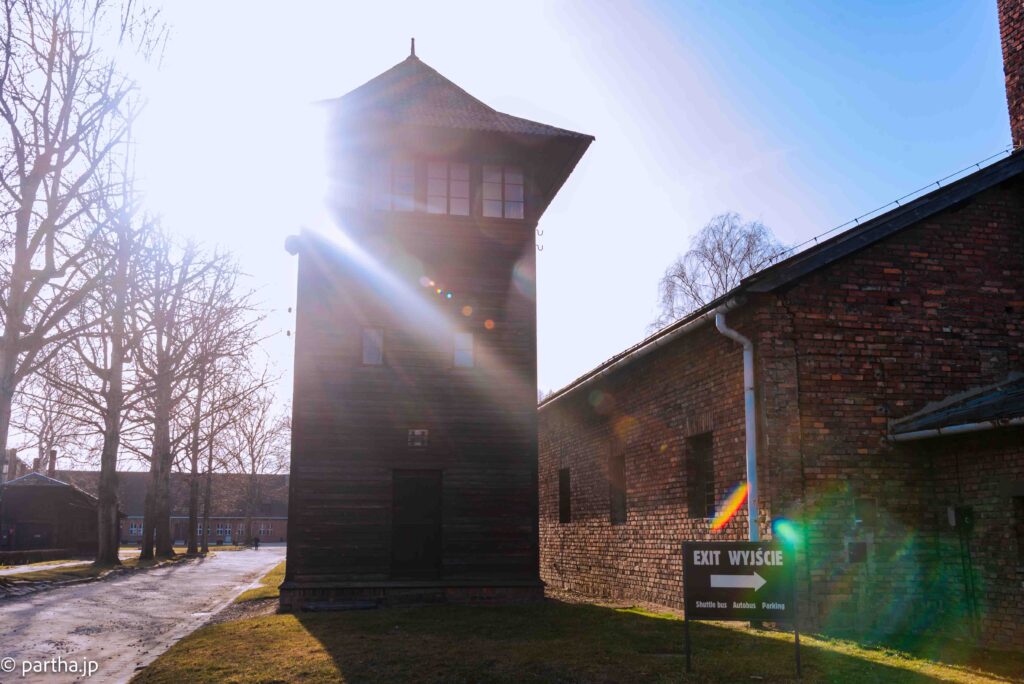
Later!
It has been three weeks since I visited Auschwitz and Birkenau and the effect on my has come as a delayed reaction. I was prepared for Auschwitz, Lawrence Rees’ book prepared, drained me emotionally until there was nothing left to be shocked about. I stopped reading the most disturbing parts many times and it was a while before I could compose myself enough to go back to reading.
What I was not prepared for was Birkenau, the killing factory, the human slaughterhouse created for the extermination of other humans. The idea that humans would create something solely for exterminating other humans seems unfathomable!
At night, in the sliver of a moment between consciousness and sleep, when the mind roams untethered, as random thoughts and images flash by in confusing sequences, I think of Birkenau.
I don’t see the Birkenau of that early spring morning, the eery beauty of the bare Lombard Poplars lined around the camp, I see it in the pictures on the site, grainy black and white images, from an aerial view, possibly from one of the watch towers.
I see the trains, I see the masses on the ramps, I see the Nazis and the selection process, a flick of the fingers that would determine if someone would die instantly or after a prolonged suffering, and sometimes I even see a face, an uncomprehending face unaware of the fate that awaits!
On nights when the mind wanders afar, passing the emaciated men of the Bosnian concentration camps, the hatchet gangs of Rwanda or the murdered Yazidis, genocides in my lifetime, images that we saw on TV. I squeeze my closed eyes hoping that will block out the images.
The closed eyes still see and the mind still thinks, going further, the Bosnian War Tribunals, the Rwandan Unity and Reconciliation commission, the Yazidis who were killed or driven out of their homes, how we forget the horrors and even try to forgive them to maintain harmony and how most of the perpetrators have escaped punishment.
Those nights before I surrender to sleep, the last emotion I feel is rage!
